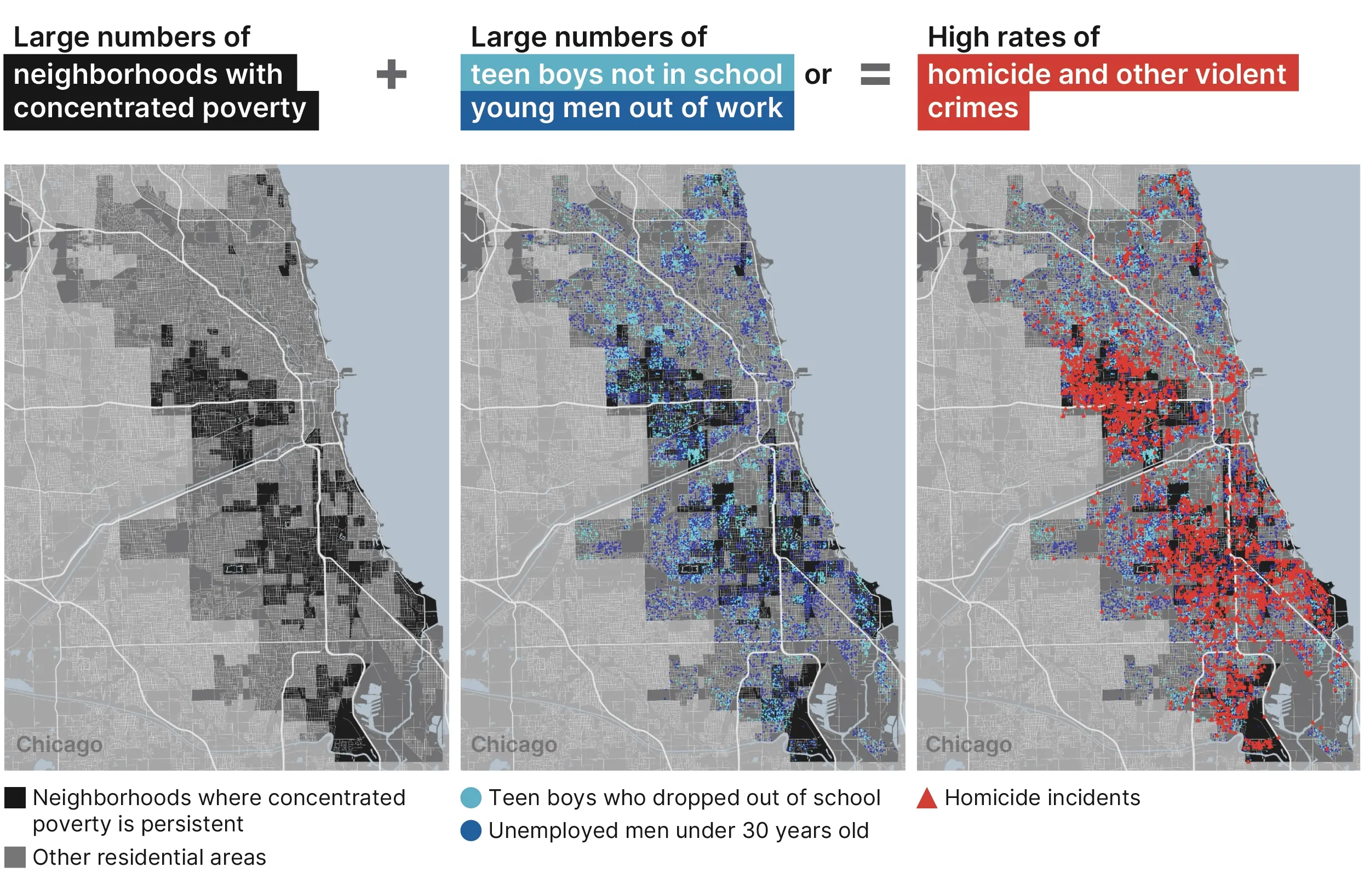
Summarizing our research on community-based public safety published by the Brookings Institution.
Violence forms patterns as distinct as fingerprints. If you map the locations of murders across U.S. cities, you will find long lines of homicides running through some neighborhoods, while other areas have no murders at all.
The places with the worst violence often have something in common. Almost all of them are neighborhoods with concentrated poverty, meaning that at least 30% of local residents are poor.
Our analyses show that neighborhoods with concentrated poverty have average homicide rates that are three to four times worse than other residential areas in their cities. There are several reasons why this occurs.
Neighborhoods with high rates of poverty have more abandoned businesses and empty lots. This creates environments where crime is easier to commit. Children in these areas are also exposed to hazards like lead paint and air pollution that are linked to aggressive behavior later in life.
However, the data shows that the vast majority of residents living in poor neighborhoods are not involved in crime. Those who do commit murder share two characteristics.
They tend to be teen boys and young men in their twenties. Males under 30 are responsible for around half of all murders in the United States.
They also tend to be disengaged from school and work. About 40 percent of people incarcerated in U.S. prisons never earned a diploma or GED, compared to just 9 percent of all adults. More than a third of people in prison had no job at the time of their crime.
Together, these findings form a clear equation. When large numbers of neighborhoods with concentrated poverty are combined with large numbers of teen boys and young men disconnected from school and work the result is likely to be higher rates of homicide.

The factors that drive this problem up are also the key to bringing it down. The formula for preventing violence requires leaders to do three things.
Reduce neighborhood poverty. Local neighborhoods are the foundation of our societies. Investments that help these communities increase their incomes and build wealth also increase the safety of everyone in and around these areas.
Keep boys connected to education. Children who drop out of high school begin to disengage many years before they actually leave. Efforts to increase graduation rates must start in elementary and middle school.
Keep young men employed. Jobs provide more than paychecks. They offer young men belonging and a sense of purpose. Apprenticeships, training programs, and job placement assistance are critical components of a city’s public safety infrastructure.
Violence is preventable. Elected officials, educators, employers, and neighbors all have important roles to play to keep communities safe.
Note: The research summarized above is drawn from a report published by the Brookings Institution and featured in The New York Times, The Economist, The Washington Post and other publications.